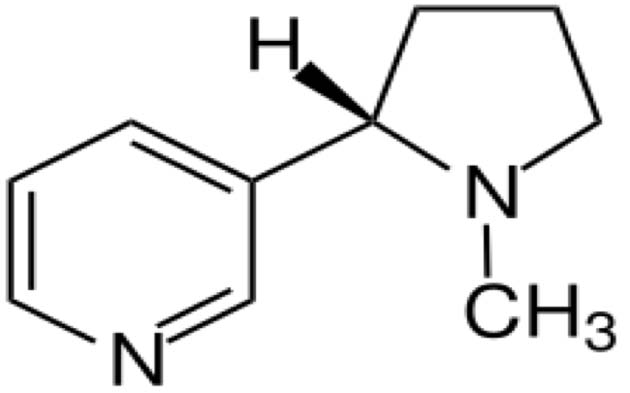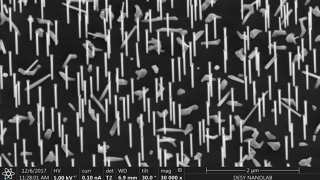Tobacco consumption can result in one of the world’s most common substance disorders. It is also associated with hundreds of thousands of preventable deaths per year. Tobacco addiction, also known as tobacco use disorder, also affects a high proportion of people who try it once. Many people who try to recover from the addiction relapse into tobacco use, even after successfully abstaining from it, for some time.
The compulsion to use, and possibly abuse, tobacco is strongly associated with nicotine. This molecule is linked to many desirable effects on the human brain and physiology. Tobacco is a rich source of nicotine, and this is probably the reason that it is so popular and hard to maintain restrain in its presence.
Targeting Nicotine in Tobacco Abuse Treatment
Existing treatments for tobacco addiction have focused on blocking nicotine from binding to its receptors in the central nervous system. However, this method has been found to be only moderately effective, at best.
An emerging alternative strategy in the treatment of tobacco use disorder is to break down the nicotine in the bloodstream before it can even reach the brain. Therefore, the patient will not derive any of the positive effects that they expected from their habit and may be more likely to stop using tobacco. But there is little clinical evidence that this form of treatment can work.
A study, testing this out in rats, has shown that the best-known nicotine degrader, NicA2-J1, was associated with the reversal of nicotine withdrawal in animals trained to take nicotine of their own accord. The new potential treatment also prevented ‘compulsive’ nicotine intake in these rats, as well as relapse-like behaviors.
New Ideas in Smoking Cessation Therapy
The novel compound, NicA2-J1, is an enzyme that targets nicotine molecules and digests them into inactive products in the bloodstream. Its efficacy and efficiency in doing so have been demonstrated in pre-clinical studies. The enzyme was originally isolated from an engineered strain of the bacterium, Pseudomonas putida. However, its ability to convert enzymatic activity into tobacco addiction therapy has not yet been proven.
Therefore, a team of researchers from the Scripps Research Institute in La Jolla, California, set up an animal trial in which the enzyme was administered to rats trained to take nicotine, spontaneously.
It was seen that these animals would become inclined to use nicotine in response to physiological or psychological stress (as human users often do). The rodents’ responses to nicotine, and to nicotine deprivation, were also similar to humans. These withdrawal symptoms included increased anxiety, irritation, and a markedly decreased pain threshold.
Rats that experienced these effects were more likely to be compulsive in resuming their nicotine habit when offered it again, even when withdrawal abated. Again, this mimicked the reaction that humans would have.

The novel treatment targets nicotine and breaks it down into an inactive form. (Image Source: Wikimedia Commons)
The Scripps researchers compared these effects in rats exposed to nicotine access, controls for these animals, nicotine-using rats treated with 2 to 10 mg/kg NicA2-J1 and similar animals treated with phosphor-buffered saline (PBS) as controls.
They reported that this regime resulted in significantly reduced levels of blood nicotine in the third group at the higher dose compared to the fourth group. In addition, the symptoms of discomfort and irritability (as measured in terms of defensive and aggressive behaviors) in the NicA2-J1 group were significantly reduced compared to those in the PBS group both during and after a period in which the doses of nicotine were gradually increased prior to withdrawal. The NicA2-J1 group also exhibited a higher pain threshold compared to the PBS group in this stage of the study.
The researchers also observed that both of these groups experienced significant drops in their pain thresholds (compared to a baseline) in the event of acute nicotine deprivation. However, while the NicA2-J1 group recovered from this, after the first 24 hours of withdrawal, the PBS group did not.
Also, NicA2-J1 treatment was significantly more likely to block the compulsion to consume nicotine in an experiment in which three out of every ten uses of the drug dispenser resulted in a moderate electric shock to a foot compared to PBS. This treatment was observed not to prevent nicotine intake, even when the dose was increased steadily for five consecutive days.
Additionally, it was seen by the team that the rats that had gone through withdrawal and successfully weaned off nicotine (defined as less than 5 behaviors associated with nicotine-seeking per day by the tenth day of abstention) were likely to resume nicotine-using behavior in response to yohimbine administration, which was used to model the physiological stress that might result in the increased urge to consume nicotine in the lab. However, these ‘relapses’ were seen significantly less likely in the NicA2-J1 group compared to PBS controls.
Can Enzymes Eat Away at Tobacco?
It was concluded that treatment with the NicA2-J1 enzyme was likely to be associated with the prevention of neurological and physiological sequelae of nicotine use and withdrawal. The team also asserted that the drug prevented nicotine dependence and the relapse into its use in the test animals compared to the PBS controls.
The group of Scripps researchers now suggest that further pre-clinical and clinical trials of this potential treatment are warranted. They also argue that as a drug with a long half-life and straightforward route of administration (in this case, peritoneal injection), this method is a good candidate as a novel compound of interest.
The Scripps team describe their attempt to tackle nicotine addiction with the help of enzymes. (Source: Scripps Research/YouTube)
Currently, tobacco abuse is thought to be associated with about 400,000 deaths per year in the United States alone. Furthermore, recovery from this addiction is linked to an extremely low rate of success. As nicotine is commonly accepted as the main psychoactive ingredient in tobacco, the inhibitions of its actions in the body may be the best way of treating nicotine withdrawal and enhancing smoking cessation in general.
An emerging trend in medical therapy intended to aid this is the enzymatic degradation of nicotine before it reaches the brain. This recent study is the best indication yet that it may be the tobacco use disorder solution of the future.
Top Image: An emerging potential treatment may help patients give up smoking by degrading the nicotine in their bloodstreams. (Source: Gellinger/Pixabay)
References
M. Kallupi, et al. (2018) An enzymatic approach reverses nicotine dependence, decreases compulsive-like intake, and prevents relapse. Science Advances. 4:(10).
M. Birge, et al. (2017) What proportion of people who try one cigarette become daily smokers? A meta analysis of representative surveys. Nicotine & Tobacco Research.
A. Cohen, et al. (2012) Robust escalation of nicotine intake with extended access to nicotine self-administration and intermittent periods of abstinence. Neuropsychopharmacology. 37:(9). pp.2153-2160.
S. Xue, et al. (2015) A new strategy for smoking cessation: characterization of a bacterial enzyme for the degradation of nicotine. Journal of the American Chemical Society. 137:(32). pp.10136-10139.
H. Tang, et al. (2013) Systematic unraveling of the unsolved pathway of nicotine degradation in Pseudomonas. PLoS Genet. 9:(10). pp.e1003923.







No comment